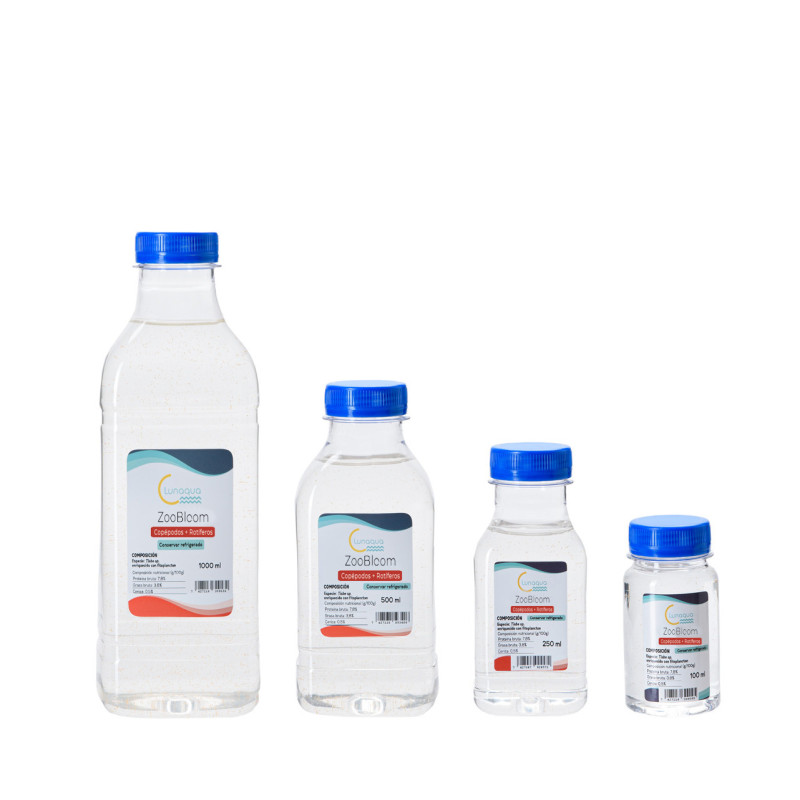More info
Genus: Thisbe
Kingdom: Animalia
Phylum: Arthropoda
Subphylum: Crustacea
Class: Maxillopoda
Subclass: Copepoda
Order: Harpacticoida
Kingdom: Animalia
Phylum: Arthropoda
Subphylum: Crustacea
Class: Maxillopoda
Subclass: Copepoda
Order: Harpacticoida
Genus: Brachionus
Kingdom: Animalia
Phylum: Rotifera
Class: Monogononta, Bdelloidea, Seisonidea
Family: Brachionidae
General characteristics
These small crustaceans make up more than 70% of the zooplankton components in all seas and are free-living organisms.
Its size ranges from 0.2-2.5mm.
They are able to swim but due to their small size they cannot define their own destiny and are carried away by water currents, which is why they are part of the plankton.
They feed on phytoplankton (microalgae) and serve as food for organisms of higher trophic levels, including fish, among others.
They have benthic habits, which allows them to be kept at high densities
High reproductive potential (high fecundity and short generations)
Their characteristic zig-zag movement is an important visual stimulus for many fish
They reproduce sexually (separate sexes) and go through six larval nauplius stages and five copepodite stages before moulting into adults.
Its size ranges from 0.2-2.5mm.
They are able to swim but due to their small size they cannot define their own destiny and are carried away by water currents, which is why they are part of the plankton.
They feed on phytoplankton (microalgae) and serve as food for organisms of higher trophic levels, including fish, among others.
They have benthic habits, which allows them to be kept at high densities
High reproductive potential (high fecundity and short generations)
Their characteristic zig-zag movement is an important visual stimulus for many fish
They reproduce sexually (separate sexes) and go through six larval nauplius stages and five copepodite stages before moulting into adults.
Advantages of copepods as food
-
Enhances the natural color of fish and crustaceans.
-
Strengthens the body's immune system.
-
They are especially useful with some aquarium inhabitants who are more delicate in their diet, either because they are sick or because they do not accept inert food.
-
Copepods in marine fish larval culture have been shown to ensure normal development with improved growth and survival by greatly reducing disease, malformation and abnormal pigmentation.
-
Being benthic and therefore sticking to the substrate it finds (rocks, glass, bottom,...) it facilitates the feeding of slow-swimming fish such as Synchiropus.
Advantages of rotifers as food
-
It is ideal for food due to its small size, slow movement, ability to be suspended in the water column, and relative ease of cultivation at high densities.
-
The size range of this organism is suitable for most farmed fish, 125-260 µm, which is intermediate in size between microalgae (20 µm) and artemia nauplii (500 µm).
-
They have a high reproductive capacity. Under favorable conditions, they reproduce asexually, with females producing an egg within hours. They are able to reproduce when they are only one day old (unlike copepods or brine shrimp, which need 2-3 weeks).
-
Another advantage is that they support high densities in cultivation.
-
They support variable conditions in the environment in which they are found (temperature, pH, salinity, oxygen,...).
-
They have a slow movement that allows organisms with difficulties to feed on them in a simpler way.
-
By having a non-selective filtration (such as Artemia) they become ideal prey to be enriched as best suits us.
-
They are easily digestible.
-
Seawater is their most optimal medium but they live perfectly in a marine aquarium as they are capable of withstanding highly variable salinity ranges (1-97ppm).
When to use copepods and what for
-
They are an excellent food source for somewhat more delicate fish: corals and other invertebrates such as anemones, fish larvae, seahorses, mandarin fish and Anthias fish
-
If our purpose is to create more zooplankton in our aquarium, we must add them at night so that they are not eaten immediately after adding them.
-
They are the best option to restore appetite in sick fish or fish that do not eat, especially mandarins, pipe fish, seahorses and fish that do not accept inert food.
-
They feed on aquarium detritus, microalgae, crushed feed,...
-
Always add the contents of the bag to the end opposite the tank's water outlet.
When to use rotifers and what for
-
The rotifer is not the natural food for marine fish larvae. However, since it began to be used in Japan as the first larval food in 1965, it has become the most widely cultivated live food in intensive aquaculture. For all these reasons, it is widely used to feed fish larvae and marine crustaceans today.
-
It is indispensable as the first live food due to the fact that the Artemia nauplius is inaccessible to the larvae during the first days of life.
-
If our purpose is to create more zooplankton in our aquarium, we must add them at night so that they are not eaten immediately after adding them.
-
Widely used for feeding corals and fish larvae. It should be noted that it is especially recommended for breeding fish such as clownfish or seahorses since these have a very small mouth size and rotifers become the ideal prey for the development of these fish.
-
Ideal for feeding all the invertebrates in our aquarium: anemones, sponges, starfish,...
Reviews
No customer reviews for the moment.




